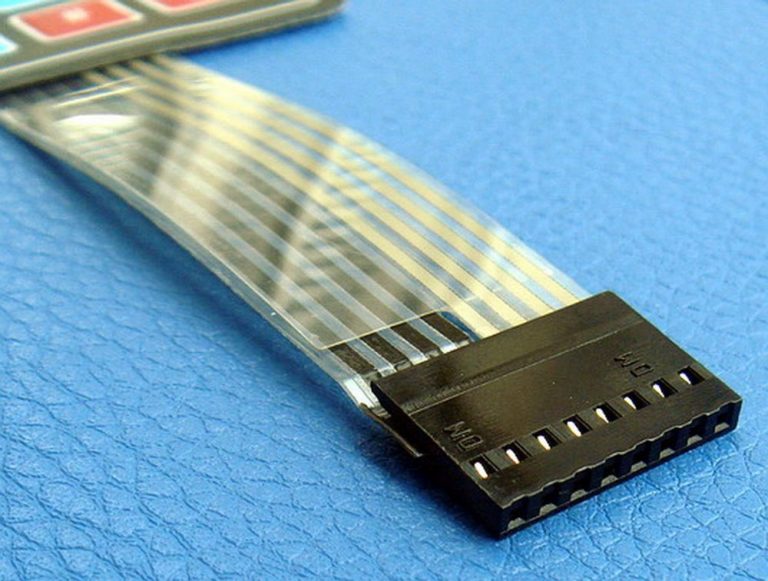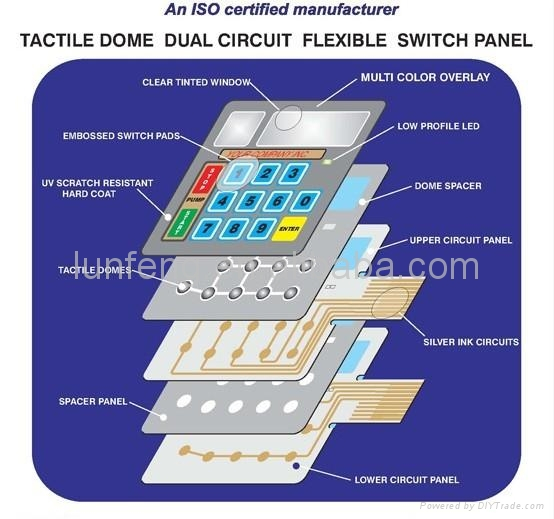Comprehending the Relevance of Membrane Switches in Customer User Interfaces
Membrane buttons are important parts in the layout of effective interface, facilitating not only functionality yet additionally boosting visual allure and customer communication. Their distinct functions, such as resistance to environmental factors and customizable layouts, make them appropriate for a diverse selection of applications throughout several industries. As we explore the numerous benefits and future patterns connected with Membrane modern technology, it ends up being clear that these switches are greater than simply components; they stand for a convergence of innovation and usefulness. The ramifications of this innovation on user experience deserve analyzing even more.
What Are Membrane Switches?

The spacer layer, which consists of sticky residential or commercial properties, enables the splitting up of the circuit layer from the overlay, ensuring that the switch remains in a non-activated state until pressed. When pressure is used to the overlay, it presses the spacer layer, bridging the void and finishing the circuit in the underlying layer. This layout not just minimizes the physical area required for conventional mechanical buttons but likewise boosts the durability of the tool, as Membrane buttons are normally immune to dirt, moisture, and various other ecological elements.
Commonly discovered in applications ranging from customer electronics to medical tools, Membrane buttons are important to modern-day technology, giving a effective and straightforward user interface that aligns with contemporary layout demands.
Benefits of Membrane Switches
While various button modern technologies exist, Membrane Switches offer unique benefits that make them especially desirable in various applications. Among the primary benefits of Membrane buttons is their small style, which enables space-saving executions in devices where realty is limited. Their slim profile not just improves aesthetic charm but likewise helps with light-weight construction.
One more substantial advantage is their resistance to ecological factors. Membrane buttons are normally sealed versus dampness, dust, and pollutants, making them excellent for usage popular environments, such as clinical tools and industrial devices. This toughness extends the lifespan of the switch, lowering upkeep expenses and boosting dependability.
In addition, Membrane switches can be customized to meet specific style needs, integrating distinct graphics and colors that improve individual interaction. Their tactile comments options can also be tailored to supply a satisfying individual experience. In addition, Membrane buttons are cost-effective, especially in high-volume applications, as they can be generated successfully.
Applications in Different Industries

In the consumer electronic devices market, Membrane buttons prevail in gadgets such as microwaves, cleaning makers, and remote controls. Their responsive comments and aesthetic alternatives improve user experience while providing a streamlined, modern appearance. Furthermore, automotive suppliers use Membrane switches in control panel controls and infotainment systems, where room is limited, and individual engagement is essential.
Furthermore, the commercial industry leverages Membrane switches in control panels for equipment and equipment, permitting intuitive procedure in often extreme settings. Their resistance to chemicals and wetness makes certain longevity and dependability in these applications. Overall, the versatility of Membrane Switches contributes dramatically to their widespread use, making them crucial in numerous technical domains.
Layout Considerations for Membrane Buttons

When creating Membrane buttons, numerous key considerations should be thought about to ensure ideal functionality and individual experience. The read what he said option of materials is vital; choosing long lasting, top notch substratums can improve the switch's durability and resistance to get redirected here environmental factors such as moisture and temperature level variations.
Second of all, the style of the graphic overlay ought to prioritize clarity and convenience of usage. Symbols and text should be legible, and the format needs to promote user-friendly interaction (membrane switches). Additionally, responsive responses is necessary; integrating a tactile dome or various other devices can improve the user experience by providing physical confirmation of activation
Another essential element is the switch's electrical efficiency. Designers must make certain that the conductive traces are appropriately developed to minimize resistance and stay clear of signal interference. This entails examining the required actuation pressure and guaranteeing compatibility with the electronic elements they will user interface with.

Future Patterns in Membrane Technology
As innovation continues to development, Membrane switches are poised to go to this site evolve substantially, driven by innovations in materials and making methods. One arising trend is the incorporation of sophisticated materials, such as conductive inks and versatile substratums, which boost toughness and lower the total weight of Membrane switches. These products not just enhance the responsive response however also enable the layout of buttons that can withstand harsher ecological conditions.
In addition, the integration of touch-sensitive technologies is transforming standard Membrane Switches right into more interactive interface. Capacitive touch sensors embedded within Membrane switch panels can supply an extra intuitive and responsive customer experience, lining up with the growing need for smooth, modern-day designs in customer electronic devices.
Additionally, developments in printing methods, such as digital and 3D printing, allow fast prototyping and modification of Membrane buttons. This versatility enables makers to react extra promptly to market needs and customer choices.
Finally, sustainability is ending up being a considerable focus, with producers discovering environmentally friendly materials and processes. As these patterns unravel, the future of Membrane innovation assures boosted capability, visual appeal, and ecological duty, strengthening their function in sophisticated individual interfaces across various industries.
Final Thought
Finally, Membrane Switches represent an important part in the layout of individual interfaces, combining capability with aesthetic adaptability. Their benefits, including resilience and resistance to ecological aspects, make them appropriate for diverse applications across different markets. Thoughtful design factors to consider enhance customer interaction and experience. As advancements in technology continue, the development of Membrane switches is anticipated to more fine-tune interface, driving innovation and enhancing usability in a progressively complicated technological landscape.
Membrane switches are important parts in the style of effective user interfaces, promoting not just functionality however additionally enhancing aesthetic charm and customer interaction.Membrane Switches serve as a vital part in different customer interfaces, facilitating a seamless communication in between users and electronic devices.While countless switch modern technologies exist, Membrane Switches offer unique benefits that make them particularly desirable in different applications.Additionally, Membrane switches can be personalized to meet particular layout demands, including special graphics and shades that improve user interaction.In conclusion, Membrane Switches represent a crucial element in the design of individual interfaces, incorporating performance with visual flexibility.